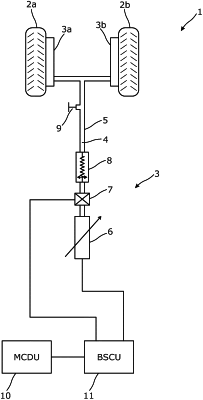| CPC F15B 21/005 (2013.01) [B64C 25/42 (2013.01); F15B 21/02 (2013.01); F16K 17/30 (2013.01); F16K 17/34 (2013.01); F15B 21/044 (2013.01); F15B 2211/40576 (2013.01); F15B 2211/41572 (2013.01); F15B 2211/426 (2013.01); F15B 2211/45 (2013.01)] | 20 Claims |

|
1. A method of removing hydraulic fluid from an aircraft hydraulic system, wherein the hydraulic system comprises:
an electrohydraulic servo valve connected to a fluid path of hydraulic fluid;
a hydraulically actuated mechanism connected to the fluid path, arranged to be actuated when a force is applied to the hydraulic fluid by the electrohydraulic servo valve;
a hydraulic fluid port through which, when opened, the hydraulic fluid can escape from the hydraulic system;
a hydraulic fuse in the fluid path between the electrohydraulic servo valve and the hydraulic fluid port, arranged to move towards a closed state in which the hydraulic fluid cannot pass when a fluid pressure differential across the hydraulic fuse is above a closing threshold, and to move towards an open state in which the hydraulic fluid can pass when a fluid pressure differential across the hydraulic fuse is below an opening threshold;
the method comprising the steps of:
opening the hydraulic fluid port;
controlling the activation of the electrohydraulic servo valve to force the hydraulic fluid to escape from the hydraulic system via the hydraulic fluid port, wherein the electrohydraulic servo valve is controlled so that the hydraulic fuse does not enter and remain in the closed state.
|